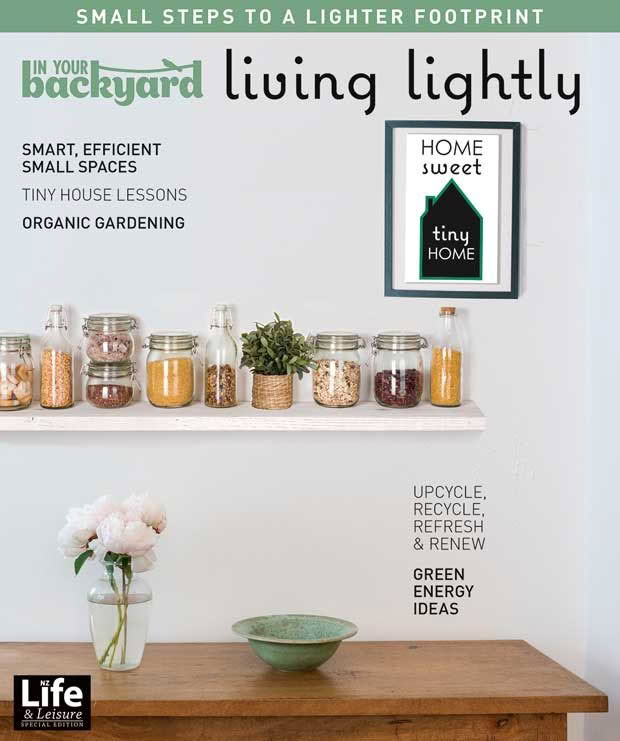Vertical gardening 101: How to use vertical planting to maximise a small space
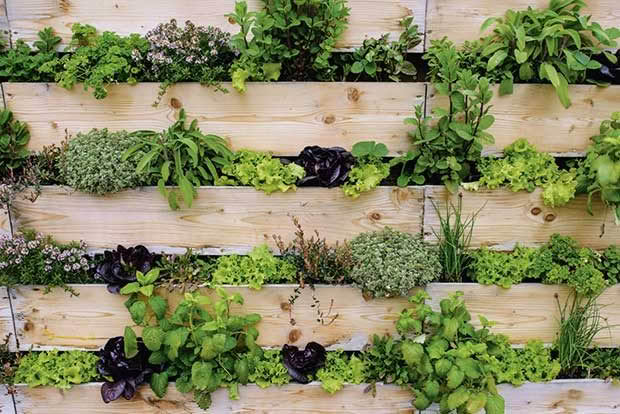
Vertical planting can substantially increase the growing area in a small garden or roof terrace. For the grow-your-own enthusiast, herbs, vegetables and small fruit such as strawberries thrive, offering a year-round harvest.
Words: Renée Davies
A few things to keep in mind when growing vertically:
1. Vertical planters require as much attention as any garden, with regular watering, weeding, pest control, feeding and trimming
2. Many planters dry out quickly; regular watering is important. Most vertical gardens require watering at least twice a day for 1-2 minutes. Equally, be cautious not to over water – if drainage is inadequate, soggy roots will soon become sickly roots.
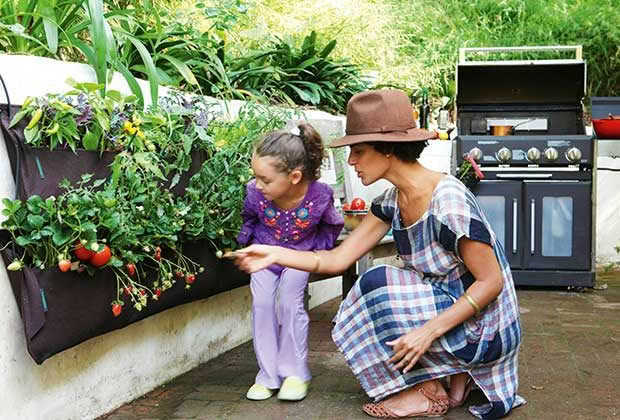
3. To make sure plants get the necessary nutrients, add fertiliser to the water, or slow-release fertiliser to the soil
4. Vertical gardens are heavy, and some walls may not be strong enough to support one. Check with a carpenter, engineer or your landlord to make sure the designated wall can handle the load.
5. When choosing a spot for your living wall, ensure the area gets plenty of light, but not direct, all-day sun
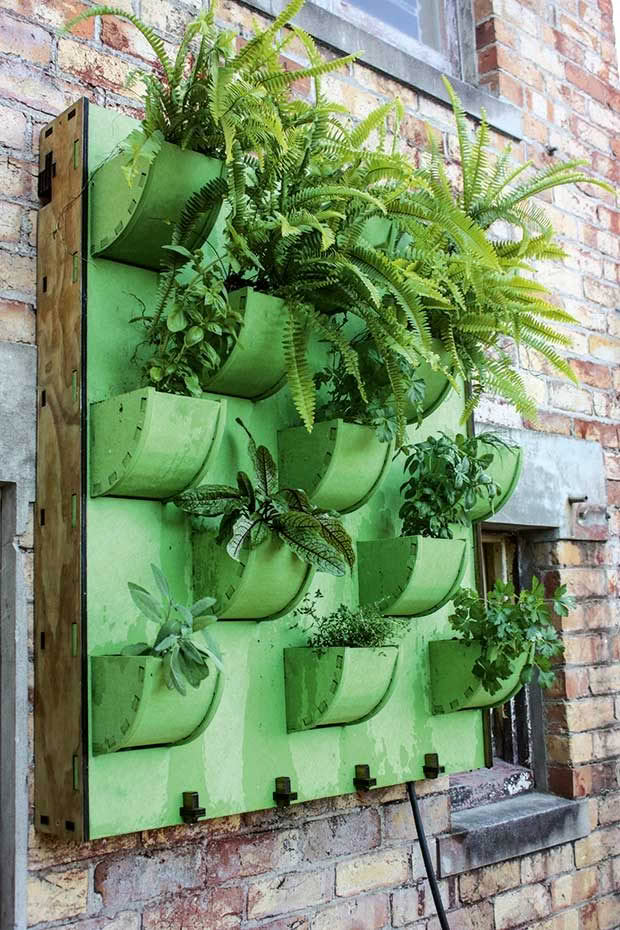
This heavy-duty modular living wall with built-in irrigation measures 1.2m high x 1m wide x 0.3m-deep panels that can be hung vertically or horizontally. Visit Living Urbanism.
6. Each growing wall has different requirements, depending on the amount of light it receives. Talk to a local nursery about plants that suit your conditions.
GOING UP
Confident DIYers can design and build their own living walls. Key considerations are building a strong, sturdy structure to support planters, using untreated timber if growing edibles, and providing appropriate drainage and irrigation. Customising will give you the growing edge.
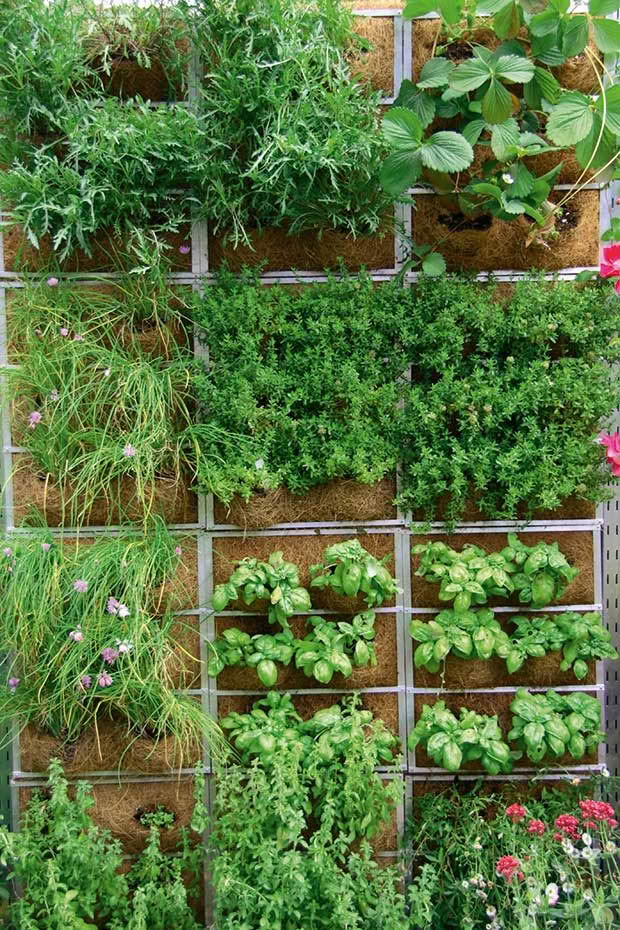
Grow sun-loving plants at the top of a living wall where they can soak up all the light they need to thrive. Scale down according to a plant’s light requirements.
GROWING GUIDE
The more natural light available, the greater variety of plants you’ll be able to grow – choose the right plant for the conditions.
WIND FACTOR
Wind significantly increases the rate of evapotranspiration – water evaporation and plant transpiration.
Choose a location with some shelter from strong winds or choose plants that cope with evapotranspiration, such as thyme, rosemary, oregano, sage and thick-leaf greens such as kale and miner’s lettuce.
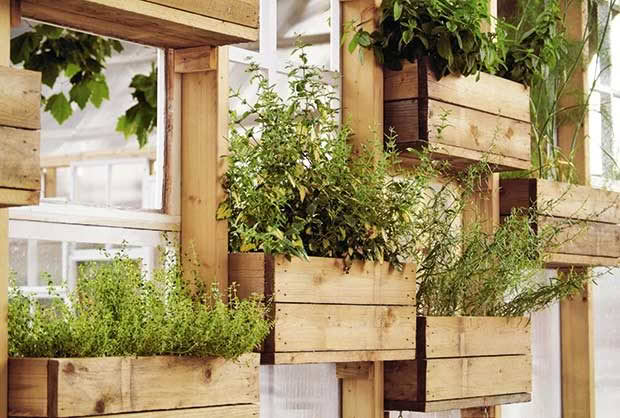
LIGHT AND BRIGHT
Be aware of how much sunlight your crop needs and where it can be best located. A built-up area shaded by surrounding buildings suits leafy vegetables, such as lettuce, cabbage and greens.
Sun radiated by concrete or reflected by a bright wall creates hotter and brighter conditions than full sun. Vegetables that like full sun include tomatoes, peppers, potatoes, beans, carrots and radishes.
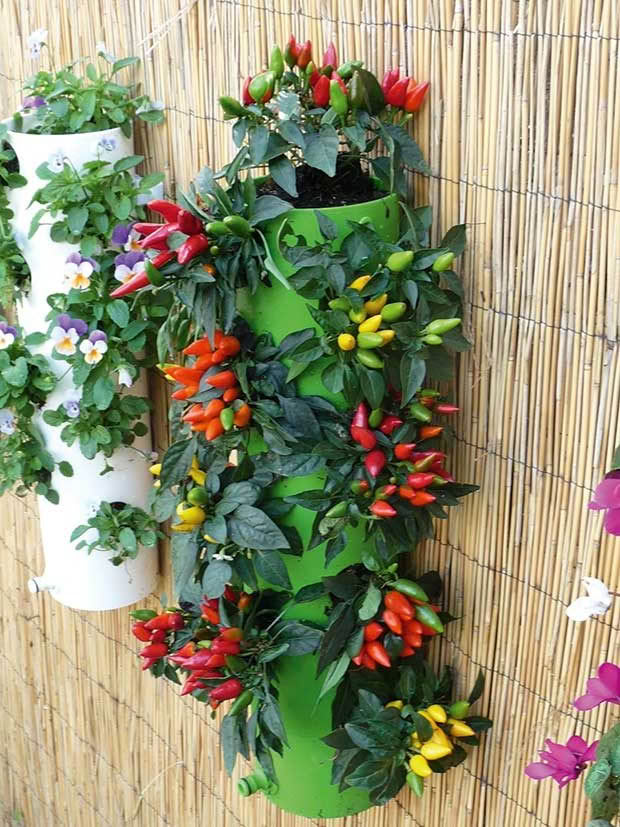
The ‘Polanter’ has an integrated watering system and can be fixed to walls, fences and windowsills. Available from hardware stores.
Light availability differs within a vertical garden, with plants at the top providing shade for their more sun-sensitive neighbours. Grow sun-loving plants such as creeping nasturtium at the top tier, where they can soak up bright, hot sun and grow to provide shade to other plants. Like a natural cliff environment, plants will create their own microclimate.
A north or east-facing location, or something in between, usually produces the happiest plants.
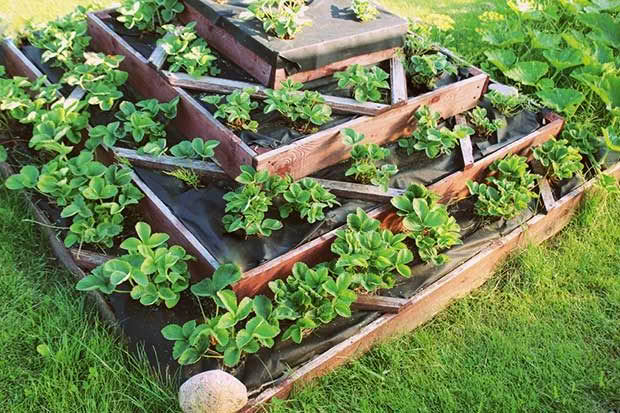
Unless you choose shade-loving plants, areas shaded by a building or wall to the south will not get enough sun to foster healthy plant growth, and west-facing positions, especially on a building, can be too intense.
CLIMBERS
Climbing plants offer a logical choice in vertical gardens; suitable vegetables include climbing beans and peas, kumara, vining tomatoes and sprawling courgette, cucumber, melon and squash that can be trained to grow up supports.
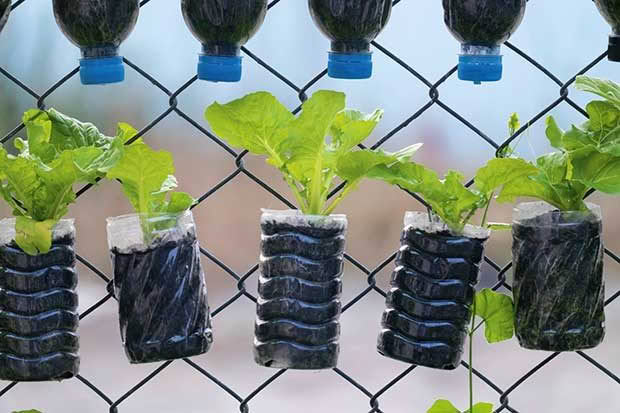
Save plastic bottles, containers and tins to plant up with herbs and greens, then hang them in a suitably sunny spot.
Trellises can be used to support trailing or vine crops. Fences serve well as a trellis for beans, peas, tomatoes and vine crops such as squash and cucumbers. Using corn stalks or sunflowers is another great way to take advantage of vertical space, while making interesting supports for beans and other climbing vegetables.
Cane fruits such as raspberries and blackberries naturally grow tall. If left unsupported, the canes have a habit of flopping over to smother neighbouring crops, but parallel wires will keep them growing vertically.
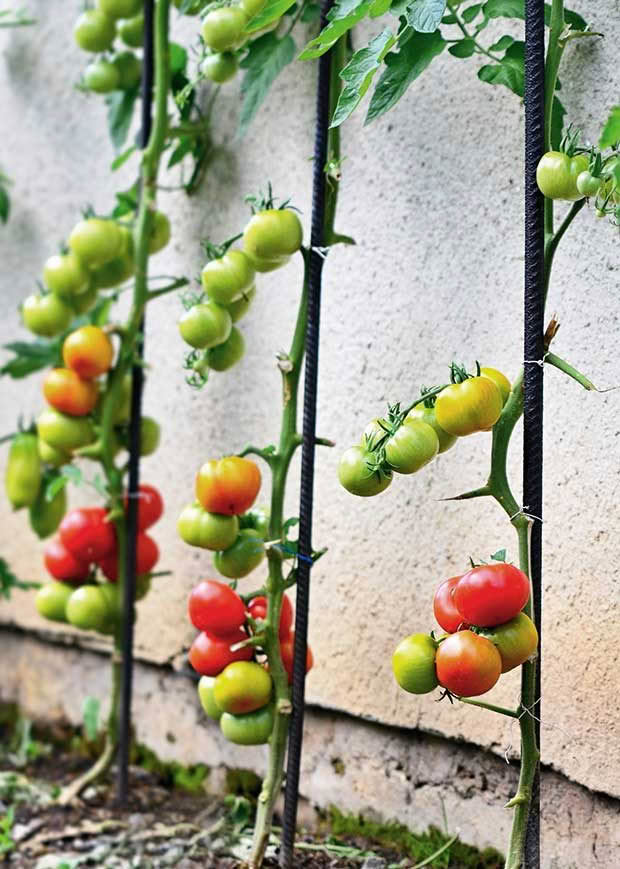
Make use of every growing inch available. Don’t be deflated if you don’t get a bumper crop the first time around – note what does well and where and keep trying.
Tip: Shallow vertical planters such as gutter gardens can become filled with a mass of roots at the end of the season. It’s best to replace the soil.
HANG IN THERE
Without a good irrigation system to rely on, hanging baskets are high maintenance as they dry out quickly. Alternatively, opt for a self-watering basket with a wicking system and water reservoir (try Yates Self Watering Hanging Tuscan Basket).
Plant cherry tomatoes, peas and strawberries (cover with netting to deter hungry birds while fruiting).
This article appeared in In Your Backyard: Urban Harvest, a special edition of NZ Life & Leisure about growing food in small city spaces. Packed with advice such as how to start a productive veggie garden, the best crops, creating awesome soil, vertical growing, container gardening, hydroponics, espaliered trees and edible hedges.
The latest In Your Backyard edition is available here.
MORE HERE:
